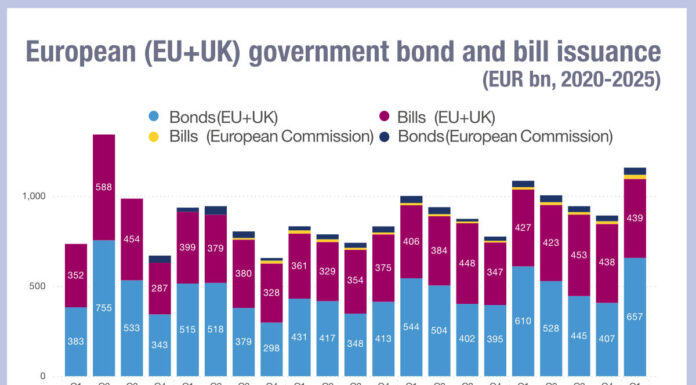 Benjamin Bécar, Fixed Income Product Manager at smartTrade Technologies believes that growing access to data is enabling buy-side firms to transform their trading workflow using an EMS. The DESK spoke with him to find out how.
Benjamin Bécar, Fixed Income Product Manager at smartTrade Technologies believes that growing access to data is enabling buy-side firms to transform their trading workflow using an EMS. The DESK spoke with him to find out how.
How is access to data improving the buy-side trade lifecycle?
It is driving better execution. Historically, buy-side firms had to rely on one or two sources of market data but today they have access to, and use, multiple sources; from indicative and firm prices, historical prices, regulatory prices, and so on. There are two main reasons for this. First, more venues are available. Second, in order to meet best execution requirements they are compelled to get a wider range of data.
Their trading desks use the standard dealer-to-client (D2C) multi-dealer platforms (MDPs) to support best execution, but how do they know which has the best price? Some dealers are only available on one venue, while others send different prices to different venues. It is a challenge for the traders, who need to be more effective with the same, or less, screen real estate.
To make it work they need to aggregate the data properly, but comparing different data sets is not like comparing apples to apples. Take government bonds for example; one might find that the data accurately tracks executable prices, whereas in less liquid markets, such as in corporate bonds, you have to work with a combination of the indicative prices offered on venues as well as historical prices.
To handle this fragmentation, buy-side firms need a sophisticated aggregator, that can provide them with the ability to look at an instrument of interest and see where the market is, in all its colours.
Which tools and skills do they need on the desk to use this data effectively?
First, you have to understand that it is impossible to manually process the current levels of information let alone what can be expected in the future, regardless of how many screens are added to a trader’s desk – they will never be able to find what they are looking for and will not achieve best execution.
Data aggregation is clearly essential, and an execution management system (EMS) is the best aggregator. The advantage that an EMS can provide to traders is significant and can be felt immediately. This will be a key driver behind the growing adoption of EMSs.
Once firms have used the EMS to make connections across a wide range of data feeds, and gained the capacity to aggregate those feed on a single platform, it then makes sense to aggregate execution through the same interface.
That will change the way people can execute, not by getting rid of the D2C execution that we see today, but by increasing the choices traders have. They will gain the ability to route orders across multiple venues which will significantly add to the execution capabilities that buy-side traders now have.
How are traders seizing this opportunity?
Today, most buy-side firms are assessing EMSs. They are looking to broaden the way they execute trades, moving beyond the request-for-quote (RFQ) protocol. We see buy-side clients trading on exchanges using a central limit order book (CLOB), using staging workflows and leveraging electronic negotiation, wherever that is possible in the fixed income universe.
However, they need to have confidence that their technology partners are experts in the domain and comprehend market complexity.
Take the example of price making. Traditionally, we might be looking at asset managers as pure price takers, with the traders structuring execution between the instructions of the portfolio managers and the responses of dealers. These days, with banks having reduced their engagement in market making, buy-side firms must provide prices far more frequently and their execution technology partners need to understand their workflow as both price makers and price takers.
What characteristics should buy-side firms be looking for in an EMS provider?
Beyond having the operational capability to aggregate data and execution, there are four clear characteristics they will need in a partner. Firstly, the partner must have strong connectivity expertise. smartTrade has extensive experience developing connections with venues including D2C, dealer-to-dealer (D2D), futures exchanges and swap execution facilities (SEFs).
Secondly, in many cases, legacy technology will still need to be supported even while trading activity occurs on new and dynamic trading platforms. The partner must be able to bridge the differences in speed and data flows, mapping activity across the trade lifecycle and provide a workable solution that delivers better execution choices.
Third, the partner business must have good relationships with a variety of different firms in the trading ecosystem, including venues and banks, that are deep and well-established.
Finally, they will need flexibility. Trading engines must be adaptable and clients should not have to wait for their partners to catch up with latest technology. EMS providers need to be evolving their offering in step with changes that are taking place in the market. Moreover, smartTrade’s out-of-the-box solution allows clients to inject their own business intelligence, such as aggregation rules, routing rules and trading rules.
Once a firm has partnered successfully with an EMS provider, how will data deliver them more value?
There is inarguably real value in data, and firms are looking to access that value more and more. Analytics are becoming essential – ideally at the point in time of trading – in order to support the wider investment objectives, whether that is lowering trading costs or capturing alpha. Traders need to be able to spot when and where securities on their portfolio manager’s watchlist suddenly become available, and when information changes that will affect the investment strategy they must be able to communicate that to the portfolio manager.
Today, it is essential to access immediate and relevant information by contextualising current and historical data. Post-trade reports and analysis are still indispensable, but they must be supplemented with the capacity to react more immediately. smartTrade’s smartAnalytics solution performs in both aspects.
The buy-side business will continue to need more intelligence, derived from data, and have it provided in real time. That enhances not only trading but also investment, as traders feed that information back to portfolio managers. It’s a virtuous circle.
What are the economics of employing an EMS effectively?
A buy-side firm has to consider how a technology investment such as an EMS can improve total cost of ownership (TCO) by increasing returns and lowering overall costs. Older order management systems (OMSs) do not allow them to leverage all of the information available today. Supplementing those older systems with an effective EMS will allow the buy side to use that data to make better, faster trading decisions, improving alpha capture and better supporting the investment process.
A modern EMS, as part of a managed service, is not only easy to set up but represents a far lower investment than the installed systems of the past. The ease with which a firm can integrate and adapt its offering is also critically important when onboarding new tools and new venues.
An EMS also reduces the time taken for a human to process information because it can parse far larger data sets into actionable information. As a result, traders can process flow activity more effectively, reducing the level of work needed to handle all orders.
Using an EMS gives you a strong competitive advantage by filling your orders more effectively, supporting your investment objectives and ultimately achieving better execution. Relying on relationships with a limited set of dealers reduces your confidence in the price you are getting from the market. Finally, an EMS can help you to reach a wider set of pricing opportunities in order to route orders more effectively.
How do you see workflows changing for traders, as they incorporate these new data and tools?
In the current environment, buy-side traders are rethinking their workflow in order to support price making and to keep their trading in line with best execution policies. This necessarily involves support from experts who understand workflows of both the buy- and sell-sides of the market and can provide connectivity to all kinds of venues, including with all-to-all platforms. That is a change in priorities for the fixed income desks.
We are also seeing interesting trends around the use of different asset classes. Trading desks that are set up with the right tools and data can for example settle trades in different currencies – a significant advantage in situations when a currency cannot leave a country. Tying together fixed income and FX execution in the workflow is invaluable in that respect.
I believe that the market will continue to innovate in the way it provides liquidity, which will mean that technology partners for buy-side firms will need to closely track, and be able to adapt to, future changes in the market.
©Markets Media Europe 2025























